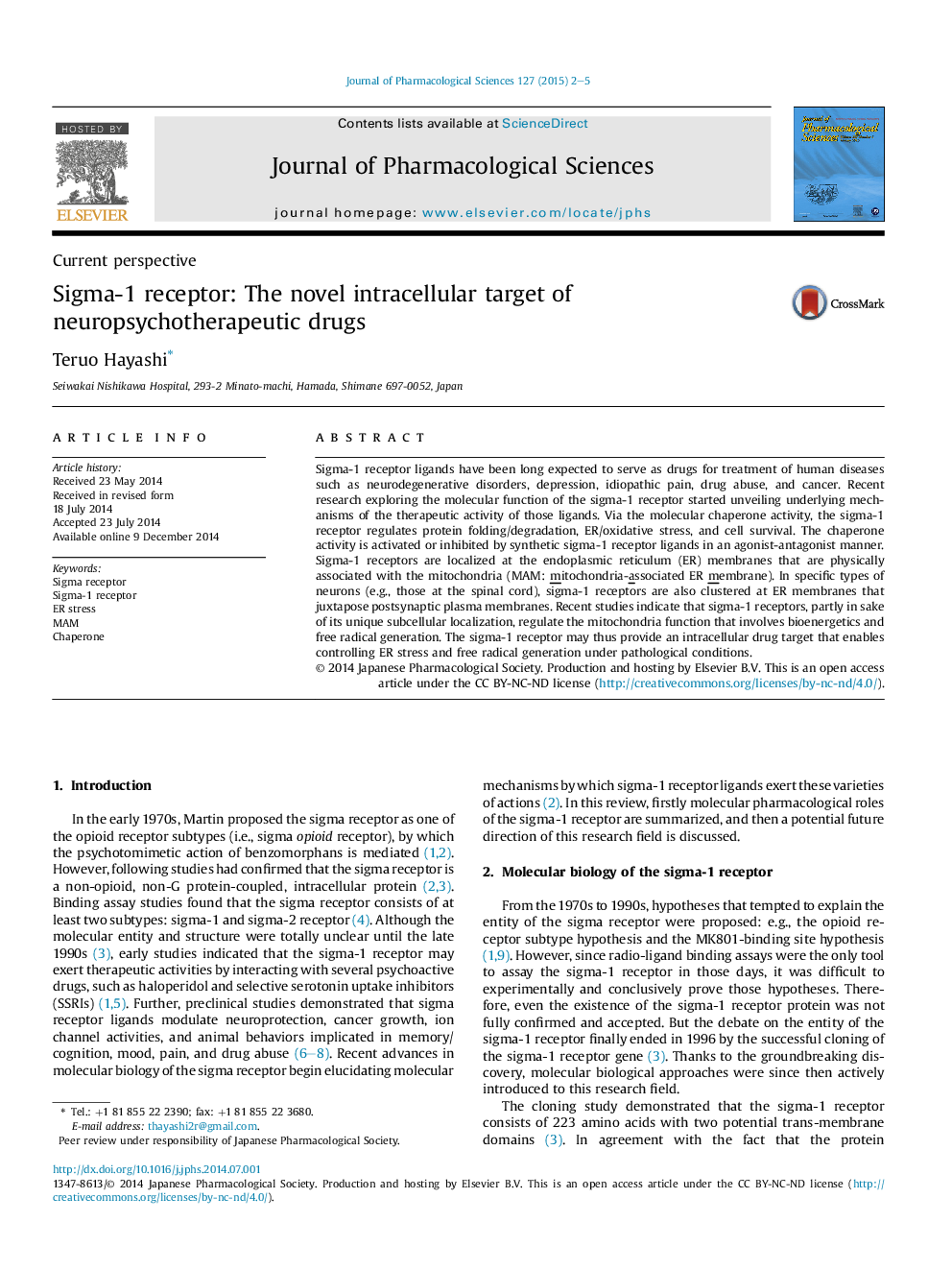| کد مقاله | کد نشریه | سال انتشار | مقاله انگلیسی | نسخه تمام متن |
|---|---|---|---|---|
| 2548811 | 1124473 | 2015 | 4 صفحه PDF | دانلود رایگان |
Sigma-1 receptor ligands have been long expected to serve as drugs for treatment of human diseases such as neurodegenerative disorders, depression, idiopathic pain, drug abuse, and cancer. Recent research exploring the molecular function of the sigma-1 receptor started unveiling underlying mechanisms of the therapeutic activity of those ligands. Via the molecular chaperone activity, the sigma-1 receptor regulates protein folding/degradation, ER/oxidative stress, and cell survival. The chaperone activity is activated or inhibited by synthetic sigma-1 receptor ligands in an agonist-antagonist manner. Sigma-1 receptors are localized at the endoplasmic reticulum (ER) membranes that are physically associated with the mitochondria (MAM: mitochondria-associated ER membrane). In specific types of neurons (e.g., those at the spinal cord), sigma-1 receptors are also clustered at ER membranes that juxtapose postsynaptic plasma membranes. Recent studies indicate that sigma-1 receptors, partly in sake of its unique subcellular localization, regulate the mitochondria function that involves bioenergetics and free radical generation. The sigma-1 receptor may thus provide an intracellular drug target that enables controlling ER stress and free radical generation under pathological conditions.
Journal: Journal of Pharmacological Sciences - Volume 127, Issue 1, January 2015, Pages 2–5
